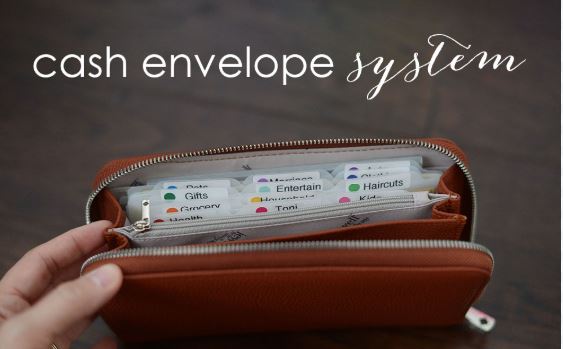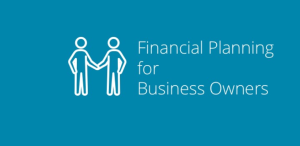In an era of digital wallets and contactless payments, millennials are surprisingly turning back the clock to embrace a budgeting method that gained popularity in the 1950s – the cash envelope system.
As rising living costs and mounting debt continue to challenge this generation’s financial stability, this time-tested approach is experiencing a remarkable renaissance.
The cash envelope system, known for its simplicity and effectiveness, is helping millennials regain control of their finances and move closer to their money goals in ways that modern apps sometimes fail to achieve.
Skale Money Key Takeaways
The cash envelope system has proven to be a game-changer for millennial budgeters, with studies showing a 20-30% reduction in overall spending when people switch to cash-based budgeting.
This system works particularly well for visual learners and those who struggle with overspending despite using digital tools.
Key benefits include:
- Immediate visibility of remaining funds
- Physical connection to spending decisions
- Enhanced awareness of spending patterns
- Reduced likelihood of impulse purchases
- Better alignment between income and expenses
Table of Contents
Understanding the Cash Envelope System Basics
The cash envelope system is a budgeting method where you allocate your monthly income into different categories, each represented by a physical envelope containing the designated amount of cash.
This straightforward approach was popularized in the mid-20th century but remains remarkably relevant today.
Core principles:
- When the money in an envelope is gone, spending in that category stops
- No borrowing between envelopes without conscious decision-making
- Physical cash creates a stronger emotional connection to spending
- Regular review and adjustment of category allocations
- Zero-based budgeting approach
Research from behavioral economics supports the effectiveness of this system. Studies show that people spend 12-18% less when using cash instead of cards, due to the “pain of paying” being more acute with physical currency.
Why Millennials Are Returning to Cash Envelopes in a Digital Age
Despite being the first digitally native generation, millennials are increasingly frustrated with the disconnect between digital spending and real financial impact.
Recent surveys indicate that 67% of millennials feel that digital transactions make it harder to track spending effectively.
The return to cash envelopes is driven by:
- Growing awareness of mindless digital spending
- Desire for more tactile financial management
- Influence of financial influencers promoting the system
- Need for better spending boundaries
- Search for alternatives to ineffective digital solutions
Setting Up Your Cash Envelope System: A Step-by-Step Guide
Implementing the cash envelope system requires careful planning and organization. Start by analyzing your monthly income and essential expenses to determine appropriate category allocations.
Recommended Category Breakdown:
| Category | Percentage | Monthly Example ($5000) |
| Housing | 30% | $1,500 |
| Food | 15% | $750 |
| Transportation | 10% | $500 |
| Utilities | 10% | $500 |
| Entertainment | 5% | $250 |
| Savings | 20% | $1,000 |
| Miscellaneous | 10% | $500 |
Implementation steps:
- Calculate your monthly take-home pay
- List all regular expenses and spending categories
- Set realistic category limits
- Get organized with labeled envelopes
- Establish a regular cash withdrawal schedule
Common Cash Envelope Categories for Millennial Spending Habits
Modern millennials have adapted the traditional envelope categories to match contemporary lifestyle needs.
Essential categories remain similar to those of previous generations, but new categories have emerged to accommodate modern spending patterns.
Popular millennial categories:
- Food delivery and dining out
- Subscription services
- Health and wellness
- Side hustle expenses
- Emergency fund
- Travel and experiences
- Professional development
- Pet expenses
Digital Integration: Modernizing the Cash Envelope System
While the core concept relies on cash, modern adaptations have emerged to handle the reality of digital transactions.
Hybrid approaches allow users to maintain the benefits of the envelope system while adapting to current payment methods.
Digital integration strategies:
- Using separate digital accounts for different categories
- Tracking apps that mirror physical envelopes
- Digital envelope system apps
- Prepaid debit cards for specific categories
- Spreadsheet tracking alongside cash envelopes
Troubleshooting Common Challenges
Even the most committed users face obstacles when implementing the cash envelope system. Understanding common challenges and their solutions helps ensure long-term success.
Solutions for common issues:
- Keep a small buffer in a “digital payments” envelope
- Use a hybrid system for online purchases
- Create an “irregular expenses” envelope
- Maintain open communication with family members
- Build in flexibility for unexpected situations
Success Stories and Data
The effectiveness of the cash envelope system is evident in the growing number of millennial success stories. Users report significant improvements in their financial situations within the first three months of implementation.
Statistical improvements:
- Average debt reduction of $5,000 in the first year
- 35% increase in emergency savings
- 25% reduction in discretionary spending
- 90% of users report better awareness of spending habits
- 80% continue using the system after six months
Advanced Strategies for Maximum Impact
Once comfortable with the basic system, users can implement advanced strategies to enhance their financial success.
Advanced techniques:
- Seasonal envelope adjustments
- Challenge periods for accelerated savings
- Cash-back optimization strategies
- Automated savings triggers
- Category rotation for optimization
Maintaining the System Long-Term
Long-term success with the cash envelope system requires consistent effort and regular system maintenance. Establishing routine check-ins and adjustments helps ensure continued effectiveness.
Maintenance strategies:
- Weekly envelope balance checks
- Monthly category review and adjustment
- Quarterly goal assessment
- Annual system optimization
- Regular partner money meetings
Security and Safety Considerations
While using cash offers many benefits, it’s essential to implement proper security measures to protect your money.
Safety tips:
- Use a fireproof safe for storing cash at home
- Keep only current month’s cash on hand
- Consider insurance for cash storage
- Maintain an emergency fund in the bank
- Use security measures when withdrawing cash
Conclusion
The cash envelope system has proven itself as a powerful tool for millennial financial management, combining old-school wisdom with modern needs. By providing a tangible connection to money and enforcing natural spending limits, this system helps users achieve their financial goals more effectively than digital-only solutions.
The success of the cash envelope system lies in its simplicity and effectiveness. As more millennials discover its benefits, this revolution in personal finance continues to grow, helping a new generation build better money habits and achieve their 2025 financial goals.
Frequently Asked Questions
How do I handle online purchases with the cash envelope system?
Create a separate envelope for online purchases or use a hybrid system with a dedicated digital account. Transfer cash from appropriate envelopes to cover online transactions.
What if I run out of money in one envelope?
This is part of the learning process. Avoid borrowing from other envelopes unless absolutely necessary. Instead, analyze why you ran short and adjust next month’s budget accordingly.
How do I get my partner on board?
Start by sharing success stories and data. Begin with a trial period and demonstrate the benefits through practical results. Communication and compromise are key to joint financial management.
Can I use this system with irregular income?
Yes, but you’ll need to create a buffer fund and prioritize essential expenses. Build your envelopes based on your minimum monthly income and adjust up during better months.
What’s the best way to start if I’m overwhelmed?
Begin with just 3-4 main categories for one month. As you become comfortable, gradually add more categories and refine your system.
How do I handle unexpected expenses?
Maintain an emergency fund envelope and a miscellaneous category for unexpected costs. Regular saving in these categories helps buffer against surprises.
![]()




